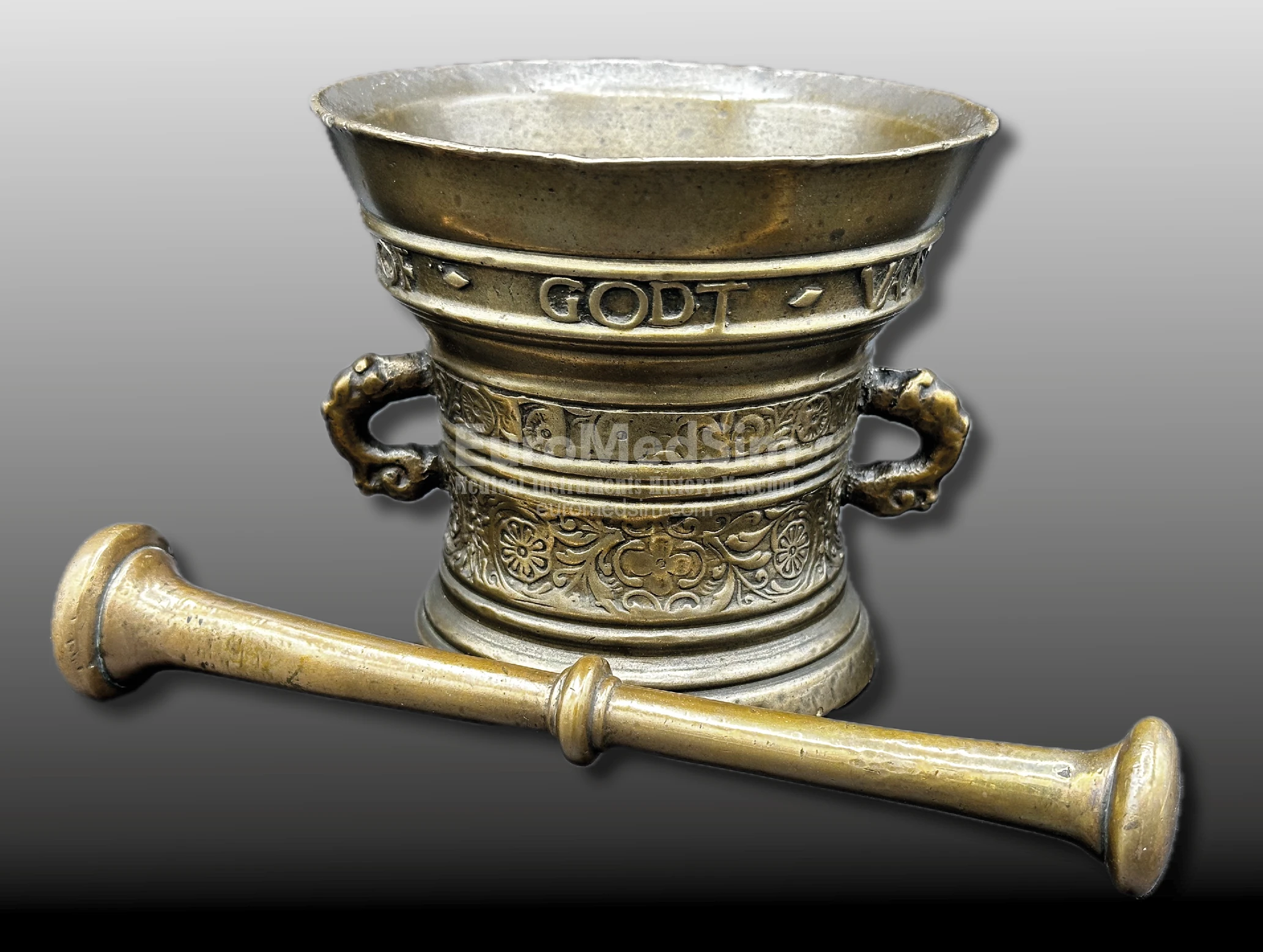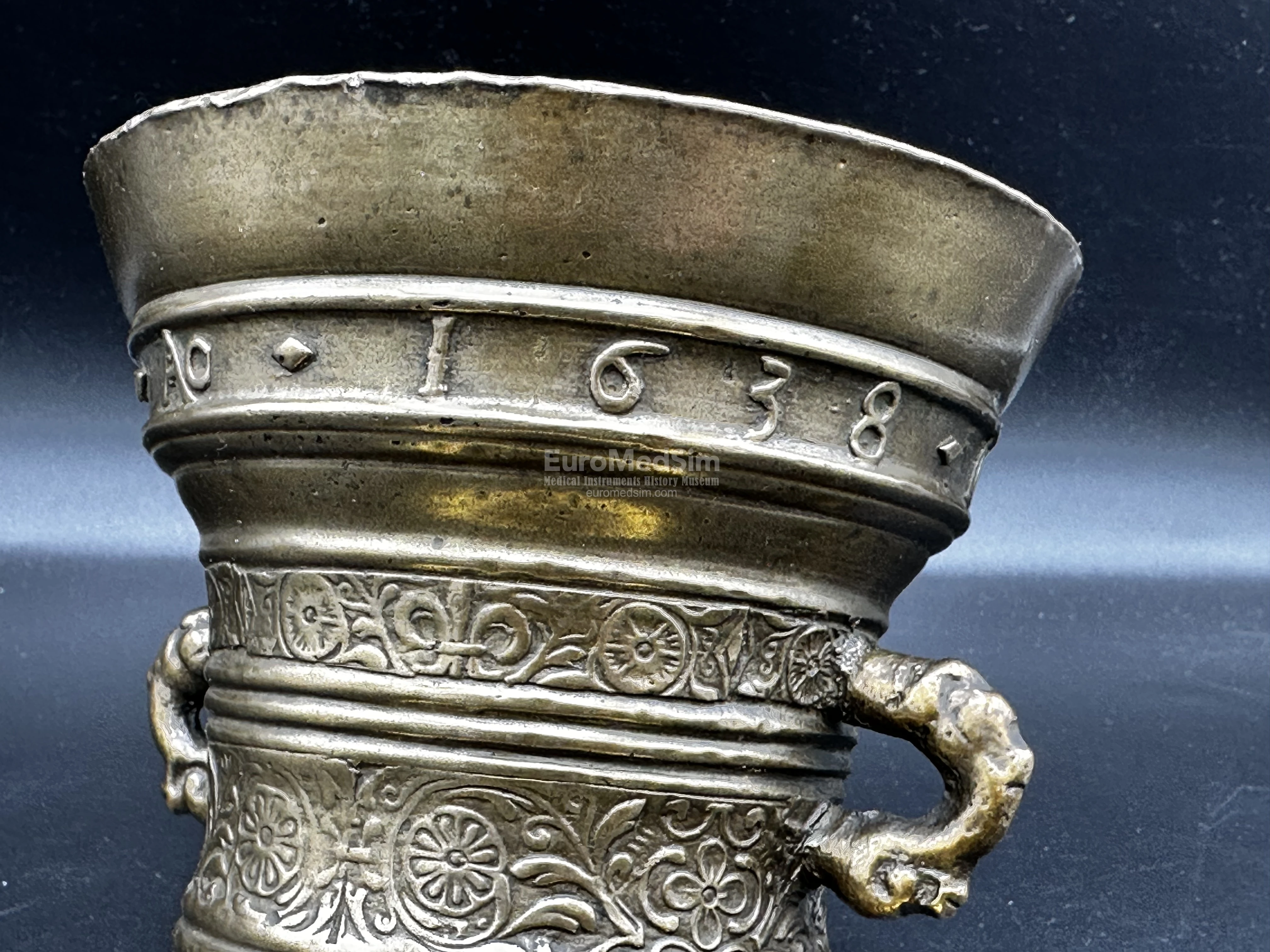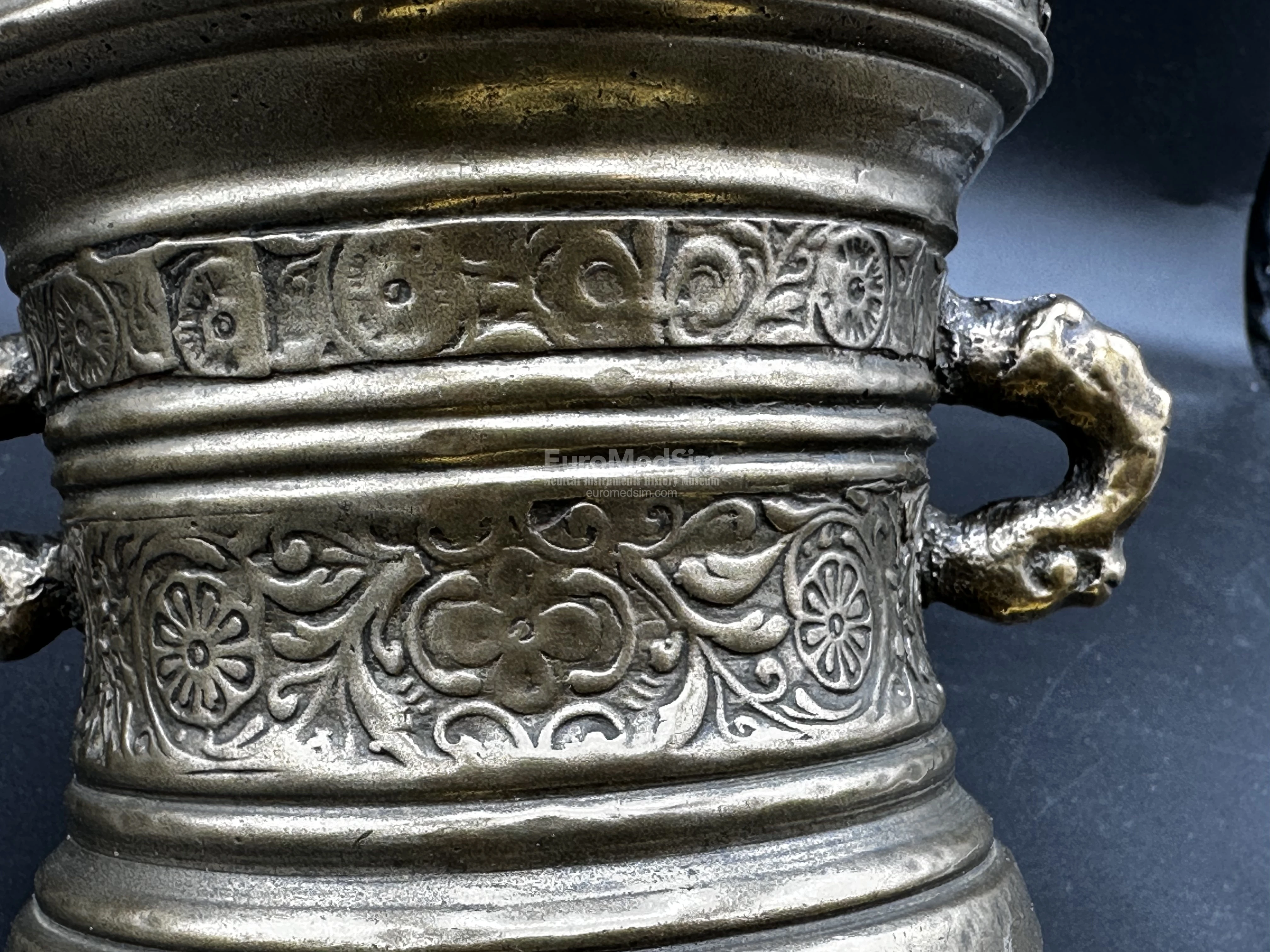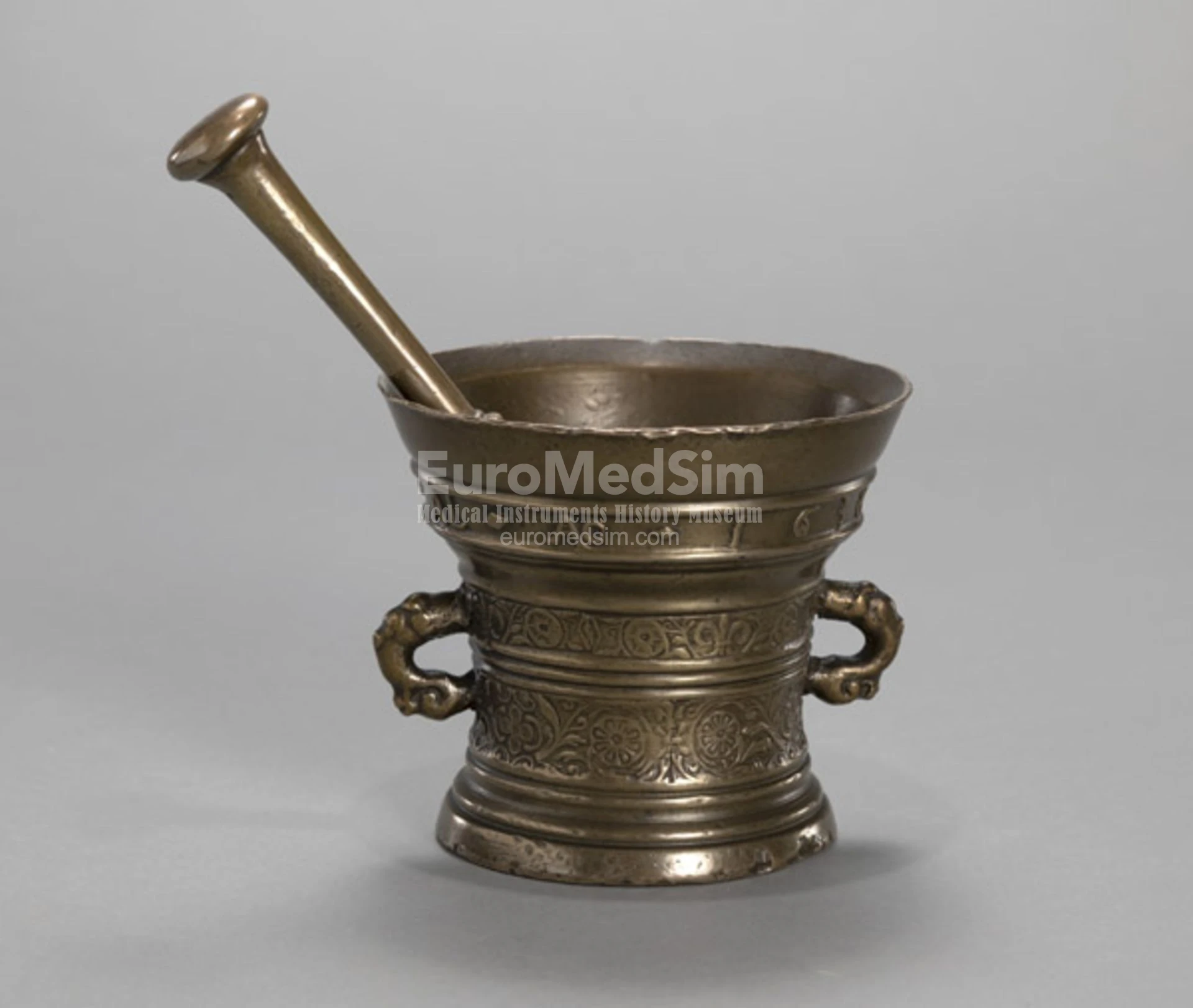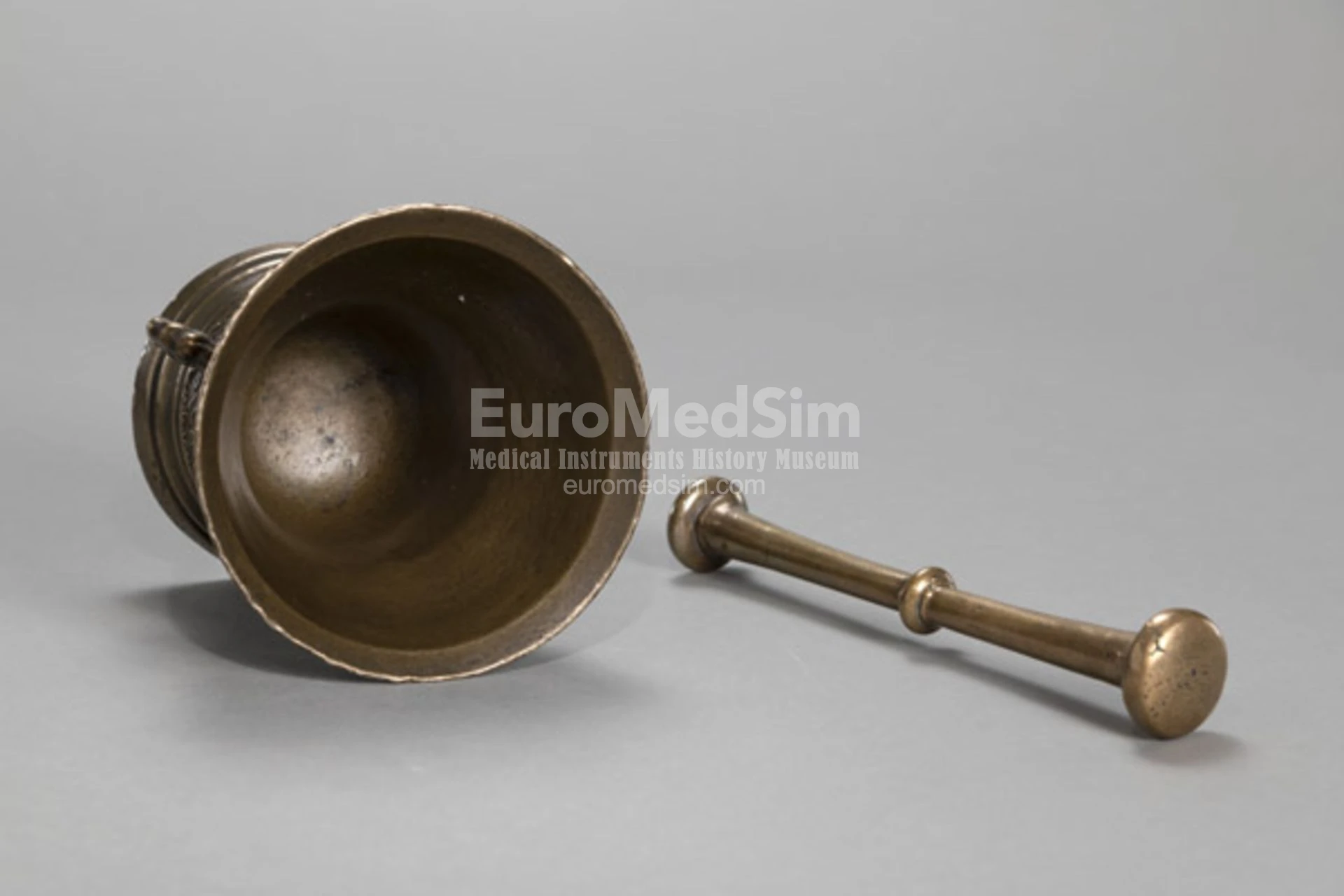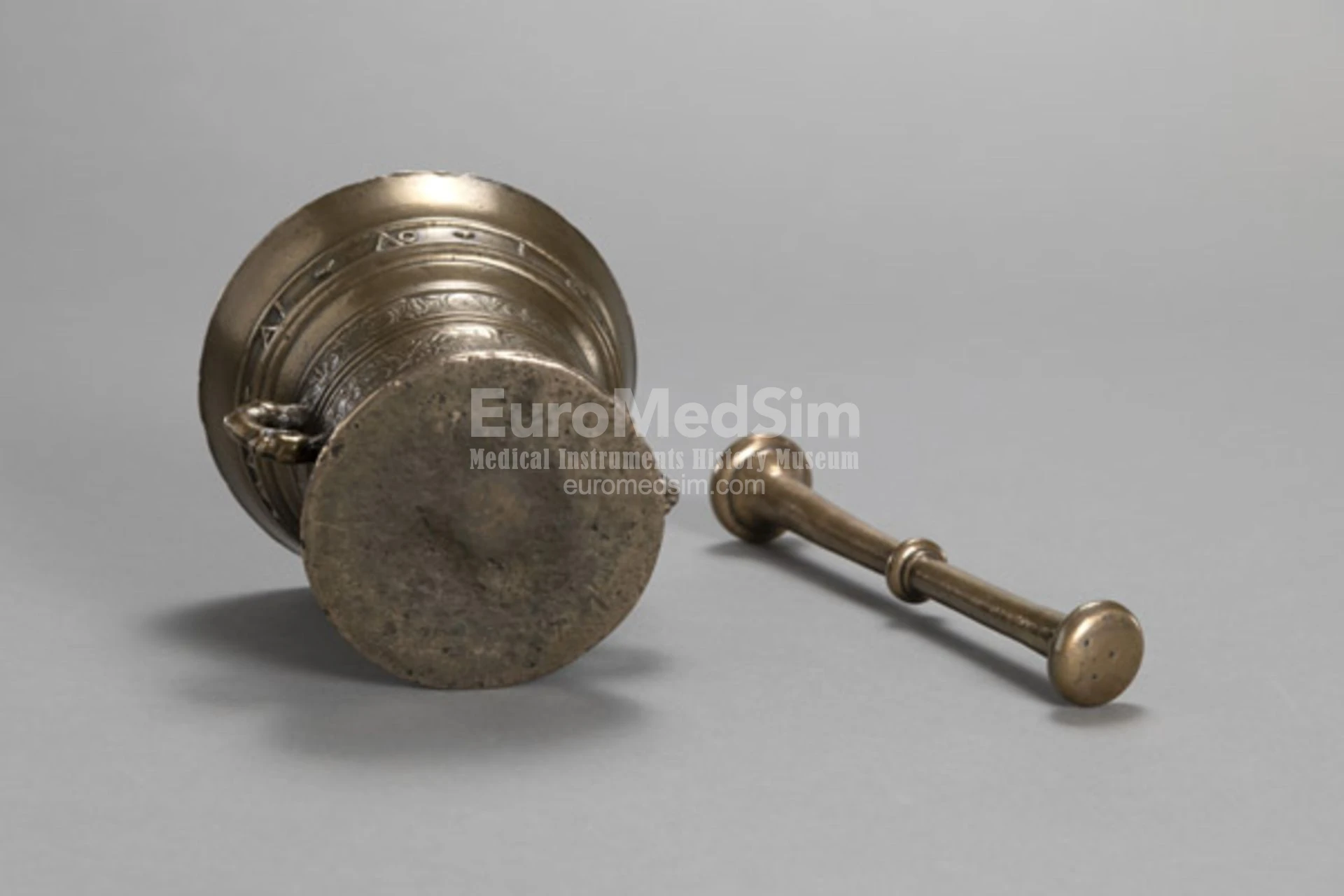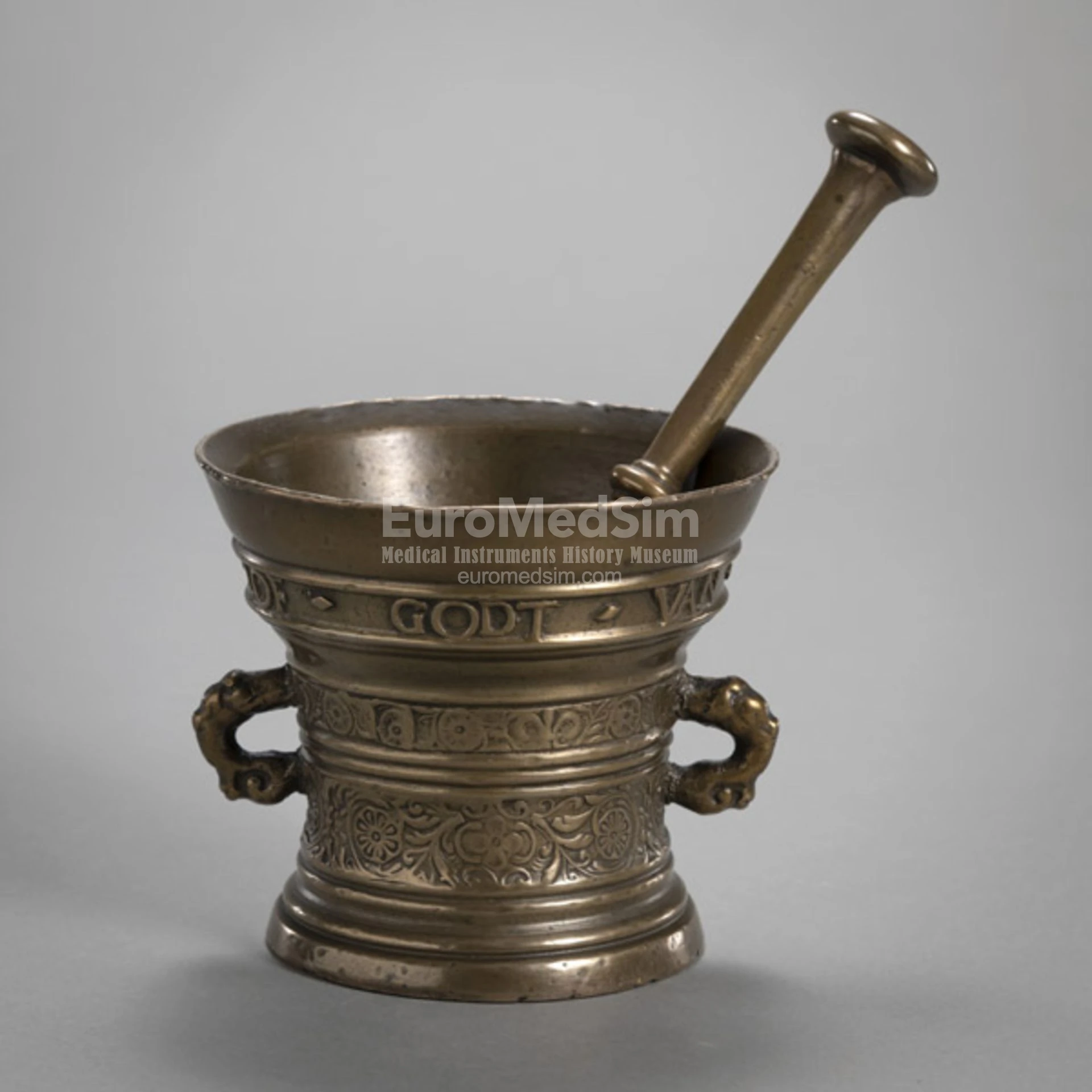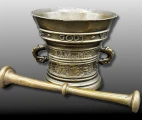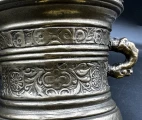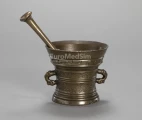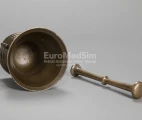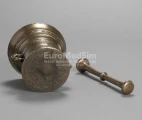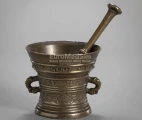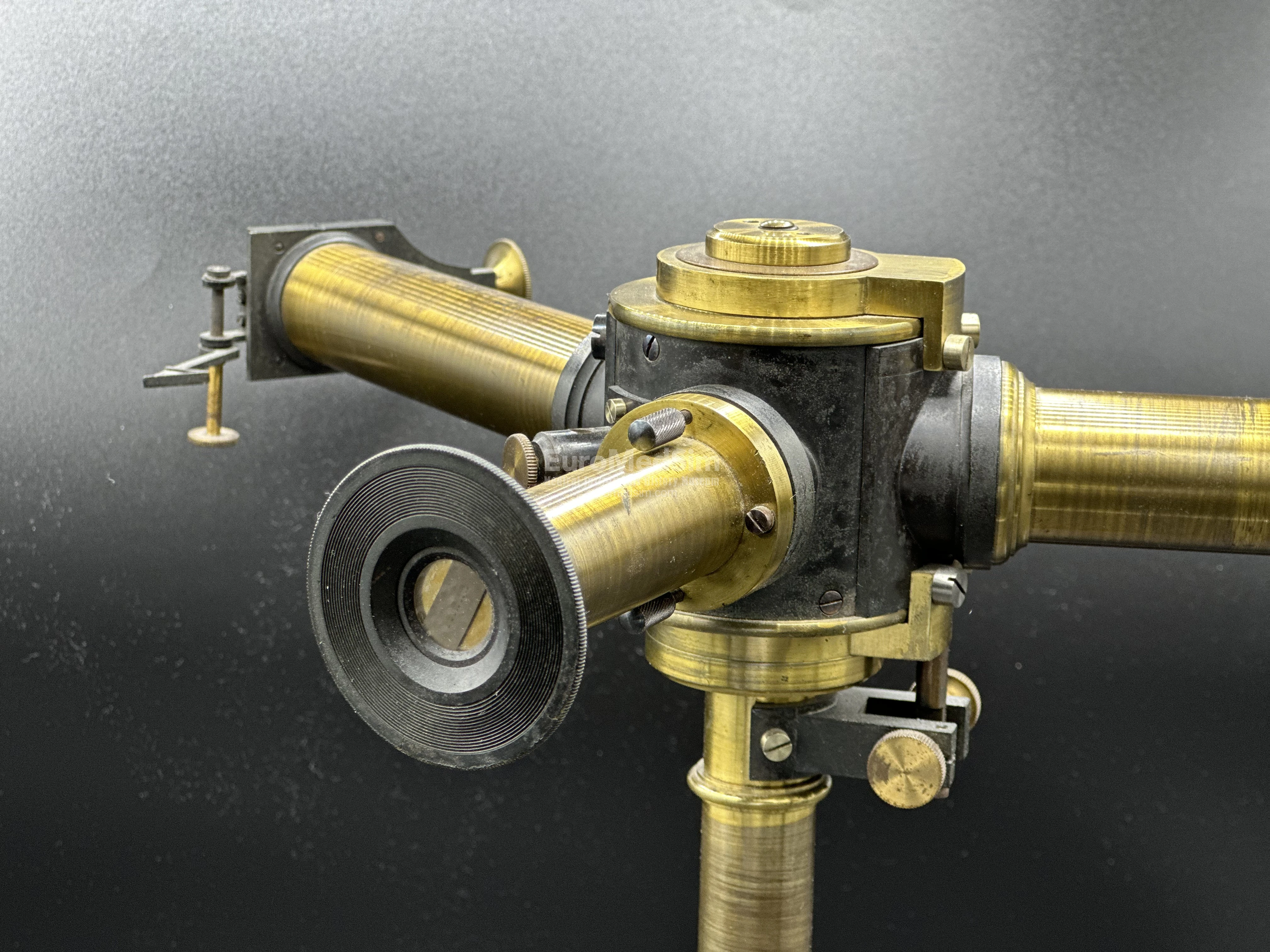Baroque bell shaped bronze mortar with pestle 1638
Object description
Mortar and pestle, baroque, The Netherlands, 1638. On the upper part circular inscription: LOF * GODT * VAN * AL * Ao * 1638. Lower there are two bands with floral ornament.
The inscription "LOF * GODT * VAN * AL * Ao * 1638" on the Dutch Baroque mortar carries a religious and devotional meaning, which was common for 17th-century Dutch artifacts, especially those used in domestic or apothecary contexts. The breakdown and interpretation of the inscription:
- LOF – Dutch for praise.
- GODT – archaic spelling of God.
- VAN AL – an archaic contraction or phrase meaning by all or of all. In modern Dutch, this would be van allen.
- Ao – abbreviation of Anno, Latin for in the year.
- 1638 – the year of manufacture.
Full interpretation: Praise God by all, in the year 1638 or more idiomatically, Let all praise God, Anno 1638. This type of religious inscription reflects the strong Protestant (especially Calvinist) influence in the Netherlands during that period, where glorifying God in everyday objects was common.
Dimensions of the mortar: height 11,0 cm; upper diameter 12,6; lower diameter 9,6. The pestle: length 20,0 cm, diameter of the biggest end 3,2 cm.
Weight: mortar 2519 g, pestle 325 g.
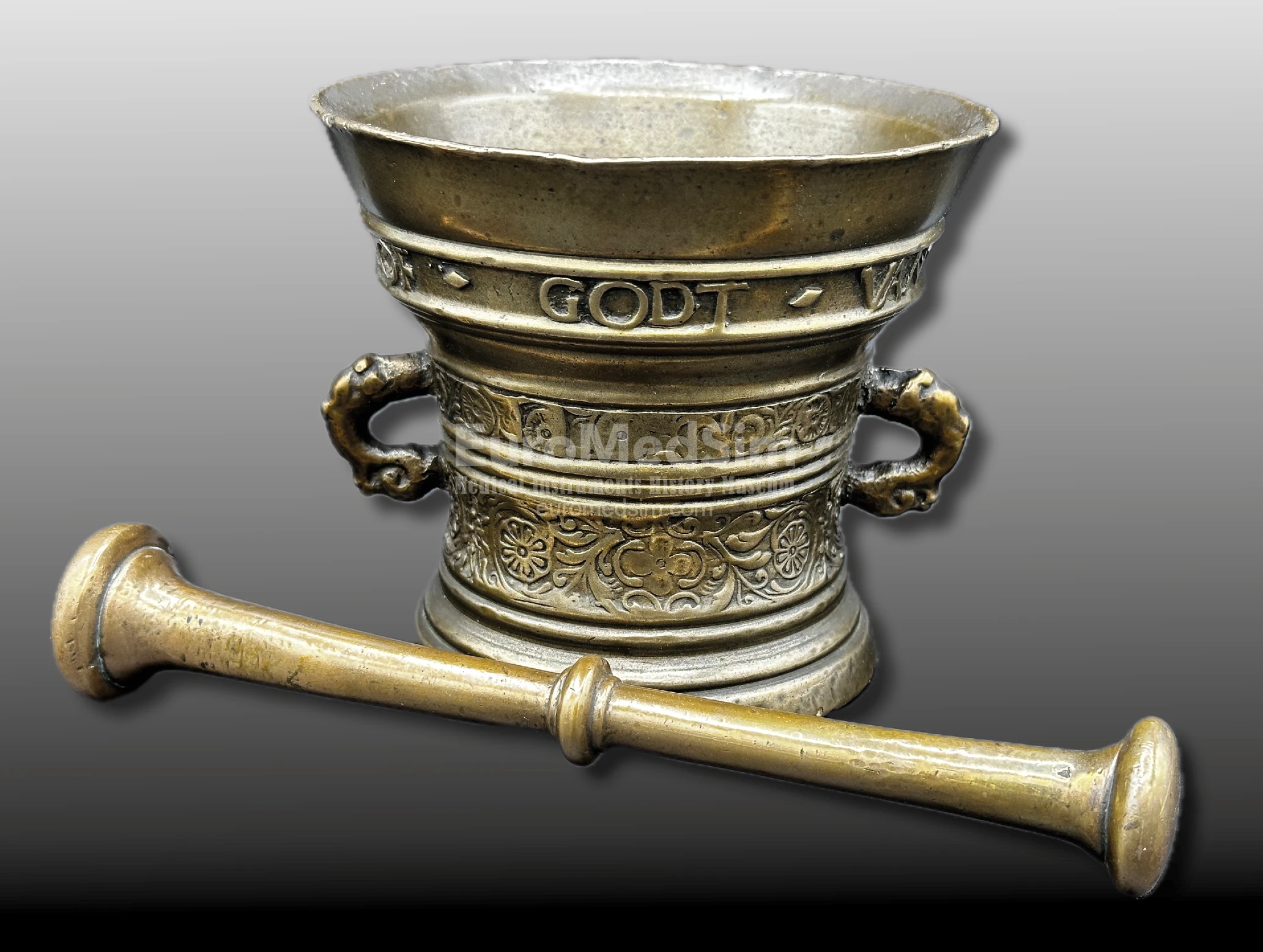
Baroque bronze mortar with pestle, The Netherlands, 17 century
Provenance
Property of the South German collectionner. Acquired from the above though Nagel Auktionen, Stuttgart in 2024.
Reference objects
As suitable reference objects may be similar items from world museums:
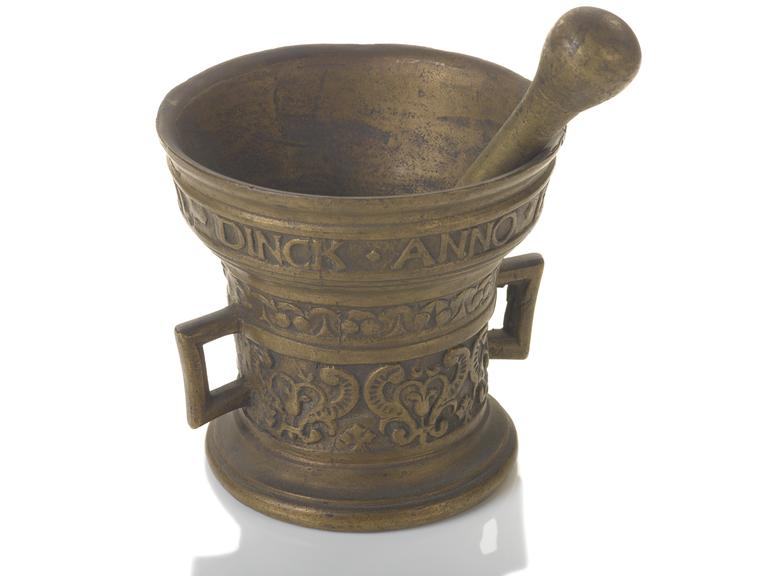
Small bronze bell shaped mortar, ca. 1590, Collection of the Science Museum, London
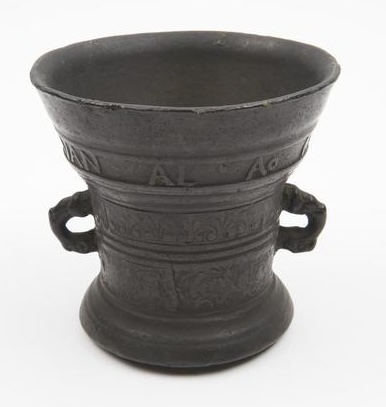
Small bronze bell shaped mortar, ca 1655, Collection of the Science Museum, London
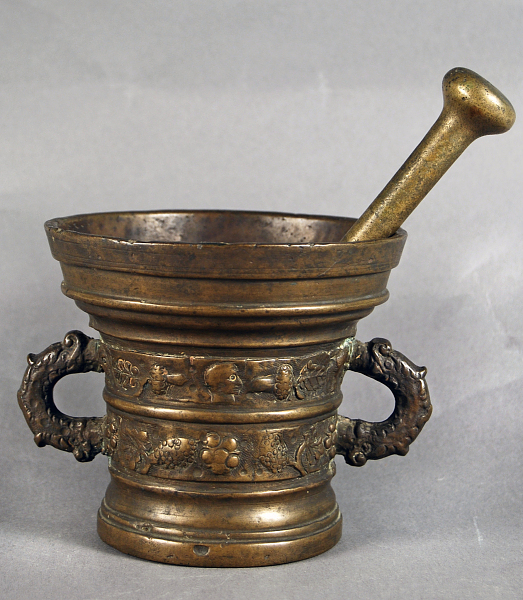
Mortar with dolphin handles, 17th century, France. The collection of the National Museum of American History, Washington DC, USA
Remarks and notes
In the 16th and 17th centuries, the European scientific landscape was shaped by an integrated framework of alchemy, medicine, and pharmacy. These disciplines were not seen as separate but as interconnected domains of a shared intellectual pursuit: the transformation of substances for the benefit of human health and understanding of nature. Within this continuum, the mortar and pestle occupied a central role—as both a practical tool and a symbol of scientific labor.
The mortar was essential for the mechanical processing of raw materials. Substances had to be ground, mixed, and homogenized to prepare them for further treatment—be it distillation, infusion, calcination, or direct administration. This was particularly important in the Galenic tradition, where medicines were compounded from multiple ingredients to balance the four humors. Similarly, in Paracelsian medicine, following the ideas of Paracelsus (1493–1541), the mortar was used to isolate the "active principles" of substances through grinding and extraction.
Mortars of this era were made from different materials — bronze, iron, stone, or ceramic, selected based on the nature of the substances to be processed. For metallic or corrosive substances, bronze and iron were preferred; for delicate botanical materials, stone or porcelain offered better control. The typical composition of bronze in 17th century pharmacy and alchemy (Copper (Cu): ~85-90% and Tin (Sn): ~10-15%) ensures clean grinding and prevents the ingredients of the ground mixture from entering the wall during the grinding process. Such alloys were hard, smooth non-porous surface, corrosion resistant and able to withstand repeated impacts during grinding. Therefore, high tin bronze became the ideal material for apothecaries, sometimes with lead added to improve the properties of the alloy during casting.
The form of the earlier pieces served primarily an applied, practical purpose, while the later examples were true works of art. Extant examples of 17th-century mortars, such as a Dutch Baroque mortar dated 1638 and inscribed “LOF GODT VAN AL Ao 1638” (“Praise God by all, in the year 1638”), reflect not only the craftsmanship of the time, but also the spiritual dimension often associated with scientific professions.
The mortar’s ubiquity can be traced through medical texts and pharmacopoeias of the period. The posthumous Dispensatorium of Valerius Cordus (1515–1544), widely used by apothecaries, included detailed instructions on how to prepare medicinal powders, pills, and ointments, all of which began with comminution in a mortar. Similarly, the Pharmacopoeia Augustana in the Holy Roman Empire (first published in 1564) and the London Pharmacopoeia (first issued in 1618) and specified not only ingredients but also techniques — pounding time, particle size, and mixing ratios. In university settings such as Padua, Leiden, and Paris, mortars were found in anatomical theatres, teaching laboratories, and dispensaries. Students of medicine and pharmacy were trained not only in theory but in the hands-on manipulation of materials, often spending long hours preparing remedies under the supervision of master apothecaries.
The cultural significance of the mortar extended beyond its functionality. In many European cities, apothecary shops displayed large bronze mortars outside their doors as a sign of their trade. Guilds of apothecaries and chirurgiens required apprentices to demonstrate proficiency in compounding before becoming licensed, and written examinations often included questions on preparation techniques.
In addition to materia medica — the natural source of pharmacological substances — the 17th century saw the emergence of chymia medica, which introduced chemically derived remedies into medical practice, further emphasized the mortar's importance. Practitioners viewed the manipulation of matter as a path to understanding both health and the natural world. The mortar, in this view, was not only a preparatory device but an instrument of discovery — akin to the microscope or retort.
